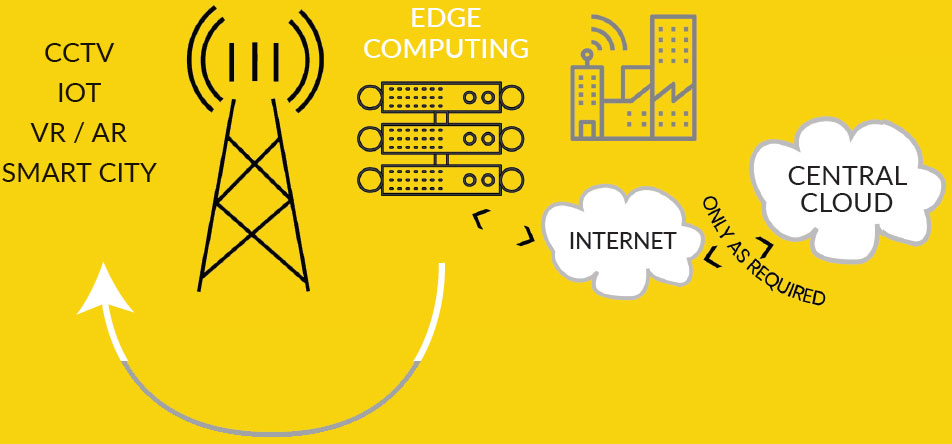The current 4G mobile networks are strained to their limits, and it is estimated that the number of connected devices will reach 100 billion by 2025. 5G’s performance goals of ultra-fast download and ultra-low latency will be impaired if all 5G application traffic has to navigate its way to the centralised cloud for computing, and then back to the connected device. Mobile cloud computing can be either centralised or distributed in nature. The computing power required for social network services like Facebook, Twitter and Instagram, and navigation tools like Google Maps are all hosted on the centralised cloud, where all the computing processes occur.
Mobile Edge Computing, or Multi-access Edge Computing (MEC) aims to reduce congestion on mobile networks, by enabling the computing that would normally be done in a centralised cloud to be done more locally, on the edge of a mobile network, closer to the connected devices. MEC is already being deployed over WIFI and LTE networks, so it needn’t necessarily wait for 5G to happen, but the complementary benefits for 5G are huge.
MEC will move the computing of traffic and services from a centralised cloud and closer to the consumer on the edge of the network. Mobile Edge Computing involves the evolution of the base station from being purely communications based, to being computing and communications based.
The edge computing hardware at the datacentres themselves will be much like at any other datacentres; clusters of racked servers in cooled units providing the required local computing power.
These server clusters may be placed at the base station, or close to a number of base stations, all of which can use the pooled resources at the same datacentre whilst still retaining the low latency. Applications which are computing intensive or latency sensitive can then be hosted and processed there.
This would allow the mobile operator to host or provide a range of applications and services that benefit from low latency, as well as reduce the amount of data traffic that needs to be sent back to the core network.
Edge Computing can also be used to reduce network transport costs for the mobile operator – costs are reduced by processing data at the edge rather than transporting it back to the core.

Machine-to-machine communication – the foundation of the Internet of Things (IoT) – has been around for decades, but now there are so many connected devices, transmitting huge amounts of data at great speed, that centralised cloud computing is no longer a realistic option for devices which require data processing in the low milliseconds.
MEC brings the resources of computing, storage and networking closer to applications, devices and users. Ultra-low latency and uniform data rates will allow the transfer of high-resolution data in real time. Whilst 4G offers around responsiveness of around 50ms, 5G promises 1ms but there would be more lag if the data and computing had to travel all the way to the cloud for processing.

Telecommunications companies can benefit in various ways from harnessing MEC. At one end of the spectrum, they may want to just provide the edge-located hosting for partners to run software on top of, whilst at the other extreme, they might want to offer end-to-end consumer retail applications, perhaps involving Augmented or Virtual Reality, that rely on video transmission in real time.
An ever greater supply of bandwidth will inevitably result in a diminished value perception of core services like voice, text, and data – and therefore pricing – for the end user. Consumers will be looking for content and value-added applications, whereas enterprise, industry and governments will be looking for solutions.
It will be up to mobile operators to assess which MEC business models offer them the best return on their 5G investments, and getting that choice right will be one of their key strategic objectives in the months and years to come.

Fill out the form below and we will contact you as soon as possible
Fill out the form below and we will contact you as soon as possible